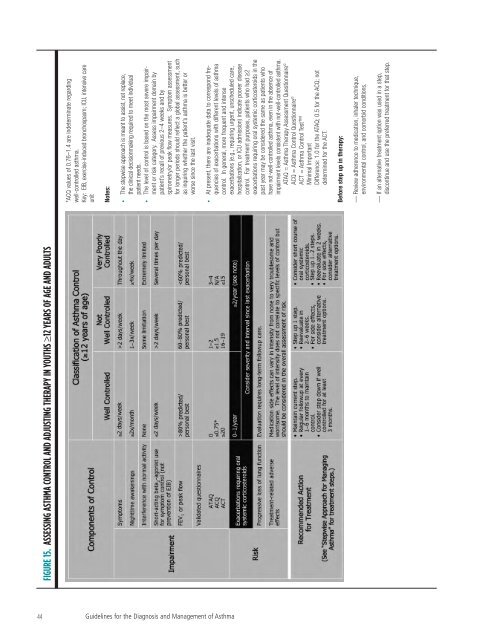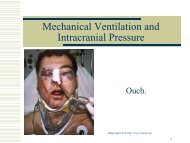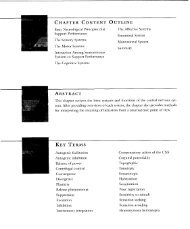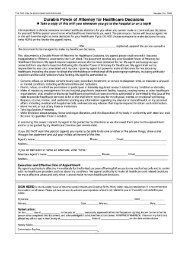Guidelines for the Diagnosis and Management of Asthma
Guidelines for the Diagnosis and Management of Asthma
Guidelines for the Diagnosis and Management of Asthma
Create successful ePaper yourself
Turn your PDF publications into a flip-book with our unique Google optimized e-Paper software.
FIGURE 15. ASSESSING ASTHMA CONTROL AND ADJUSTING THERAPY IN YOUTHS ≥12 YEARS OF AGE AND ADULTS<br />
*ACQ values <strong>of</strong> 0.76–1.4 are indeterminate regarding<br />
well-controlled asthma.<br />
Key: EIB, exercise-induced bronchospasm; ICU, intensive care<br />
unit<br />
Notes:<br />
• The stepwise approach is meant to assist, not replace,<br />
<strong>the</strong> clinical decisionmaking required to meet individual<br />
patient needs.<br />
• The level <strong>of</strong> control is based on <strong>the</strong> most severe impairment<br />
or risk category. Assess impairment domain by<br />
patient’s recall <strong>of</strong> previous 2–4 weeks <strong>and</strong> by<br />
spirometry/or peak flow measures. Symptom assessment<br />
<strong>for</strong> longer periods should reflect a global assessment, such<br />
as inquiring whe<strong>the</strong>r <strong>the</strong> patient’s asthma is better or<br />
worse since <strong>the</strong> last visit.<br />
• At present, <strong>the</strong>re are inadequate data to correspond frequencies<br />
<strong>of</strong> exacerbations with different levels <strong>of</strong> asthma<br />
control. In general, more frequent <strong>and</strong> intense<br />
exacerbations (e.g., requiring urgent, unscheduled care,<br />
hospitalization, or ICU admission) indicate poorer disease<br />
control. For treatment purposes, patients who had ≥2<br />
exacerbations requiring oral systemic corticosteroids in <strong>the</strong><br />
past year may be considered <strong>the</strong> same as patients who<br />
have not-well-controlled asthma, even in <strong>the</strong> absence <strong>of</strong><br />
impairment levels consistent with not-well-controlled asthma.<br />
ATAQ = <strong>Asthma</strong> Therapy Assessment Questionnaire ©<br />
ACQ = <strong>Asthma</strong> Control Questionnaire ©<br />
ACT = <strong>Asthma</strong> Control Test<br />
Minimal Important<br />
Difference: 1.0 <strong>for</strong> <strong>the</strong> ATAQ; 0.5 <strong>for</strong> <strong>the</strong> ACQ; not<br />
determined <strong>for</strong> <strong>the</strong> ACT.<br />
Be<strong>for</strong>e step up in <strong>the</strong>rapy:<br />
— Review adherence to medication, inhaler technique,<br />
environmental control, <strong>and</strong> comorbid conditions.<br />
— If an alternative treatment option was used in a step,<br />
discontinue <strong>and</strong> use <strong>the</strong> preferred treatment <strong>for</strong> that step.<br />
44 <strong>Guidelines</strong> <strong>for</strong> <strong>the</strong> <strong>Diagnosis</strong> <strong>and</strong> <strong>Management</strong> <strong>of</strong> <strong>Asthma</strong>





